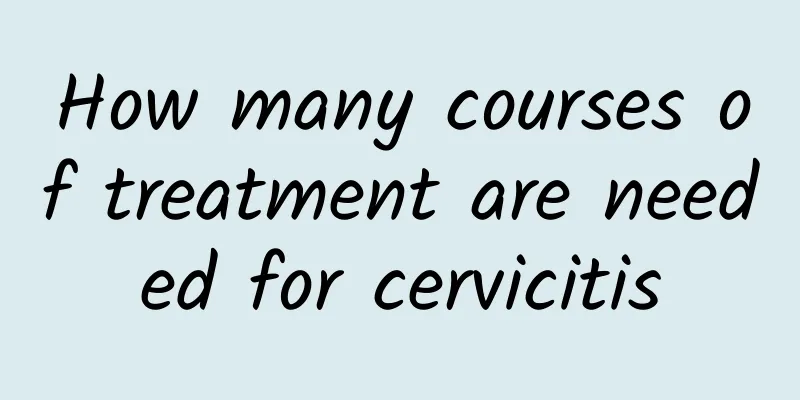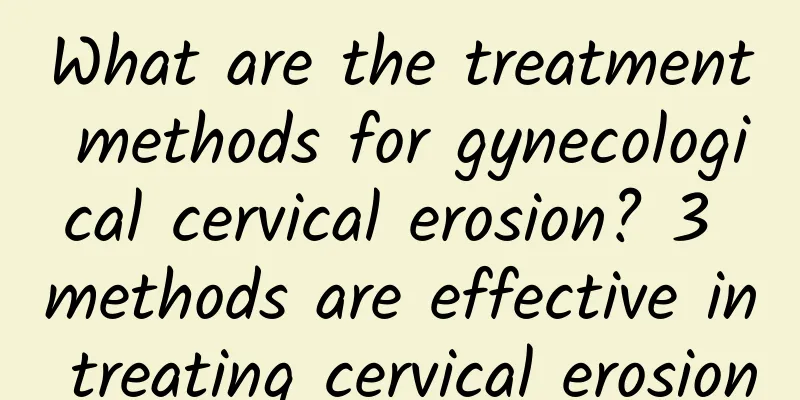How many courses of treatment are needed for cervicitis

|
The course of treatment for cervicitis varies from person to person, and usually requires 1-3 courses of treatment, depending on the severity of the condition and the treatment method. Mild cervicitis may be relieved within 1-2 courses of treatment with medication, while chronic or severe cervicitis may require more courses or a combination of treatments. Treatment options include medication, physical therapy, and lifestyle adjustments. 1. Drug treatment Drug treatment is a common method for cervicitis and is suitable for mild or moderate patients. Commonly used drugs include antibiotics, anti-inflammatory drugs and topical drugs. Antibiotics: such as azithromycin and doxycycline, used to treat cervicitis caused by bacterial infection. Anti-inflammatory drugs: Such as ibuprofen, which can relieve inflammation and pain. Topical medications: such as vaginal suppositories or gels, which act directly on the cervix to promote healing. 2. Physical therapy For chronic or severe cervicitis, physical therapy may be more effective. Laser therapy: Laser therapy is used to irradiate the cervix to eliminate inflamed tissue. Cryosurgery: The use of low-temperature freezing technology to destroy abnormal cells. Electrocautery: Electric current is used to burn the affected area, promoting the regeneration of healthy tissue. 3. Lifestyle Adjustment Healthy lifestyle habits can help speed recovery and prevent relapses. Maintain personal hygiene: clean your vulva daily and avoid using irritating lotions. Avoid unclean sexual behavior: Use condoms to reduce the risk of infection. Enhance immunity: eat a balanced diet, exercise moderately, and ensure adequate sleep. Treatment of cervicitis requires a personalized plan based on the specific situation. Mild patients can recover in the short term with medication, while chronic or severe patients may need a combination of physical therapy and lifestyle adjustments. Regardless of the severity of the disease, timely medical treatment and compliance with doctor's advice are key. Regular follow-up and health management can help prevent recurrence and ensure long-term health. |
<<: Is hydatidiform mole dangerous?
>>: Vaginitis caused by adnexitis
Recommend
How to detect ectopic pregnancy earlier?
How to detect ectopic pregnancy earlier? Most peo...
What is the cause of irregular menstruation after induced abortion?
Recently, many women have asked what is the reaso...
What should pregnant women with cervical warts pay attention to?
Cervical warts are a common sexually transmitted ...
What to eat for menopausal endometrial thickening
Many women are aware of endometrial thickening. T...
Does uterine fibroids affect menstruation? It depends on the location and size
Uterine fibroids are one of the most common gynec...
What if my period stops after one day?
Why does my period stop after one day? If menstru...
Feeling uncomfortable and want to exercise? What to do before and after exercise? Don't make mistakes with the 7 common sports equipment in parks
Everyone knows the benefits of exercise, the prob...
What are the preventive measures for threatened abortion?
Threatened abortion is extremely harmful, so what...
Undefeated weight loss! Eating guava before meals reduces fat absorption
During the Chinese New Year, all kinds of greasy ...
What is habitual miscarriage? Pay attention to these 6 aspects
If a woman has three or more miscarriages in a ro...
When is the right time to get the flu shot for adults?
It is generally best to get an adult flu shot bef...
Irregular menstruation and abnormal vaginal discharge
Irregular menstruation and abnormal vaginal disch...
Is surgery the only option for ectopic pregnancy if conservative treatment fails?
If conservative treatment of ectopic pregnancy fa...
Analysis of the relationship between chronic cervicitis and miscarriage
Chronic cervicitis is a common gynecological dise...
What are the main treatments for ectopic pregnancy?
What are the main treatments for ectopic pregnanc...









